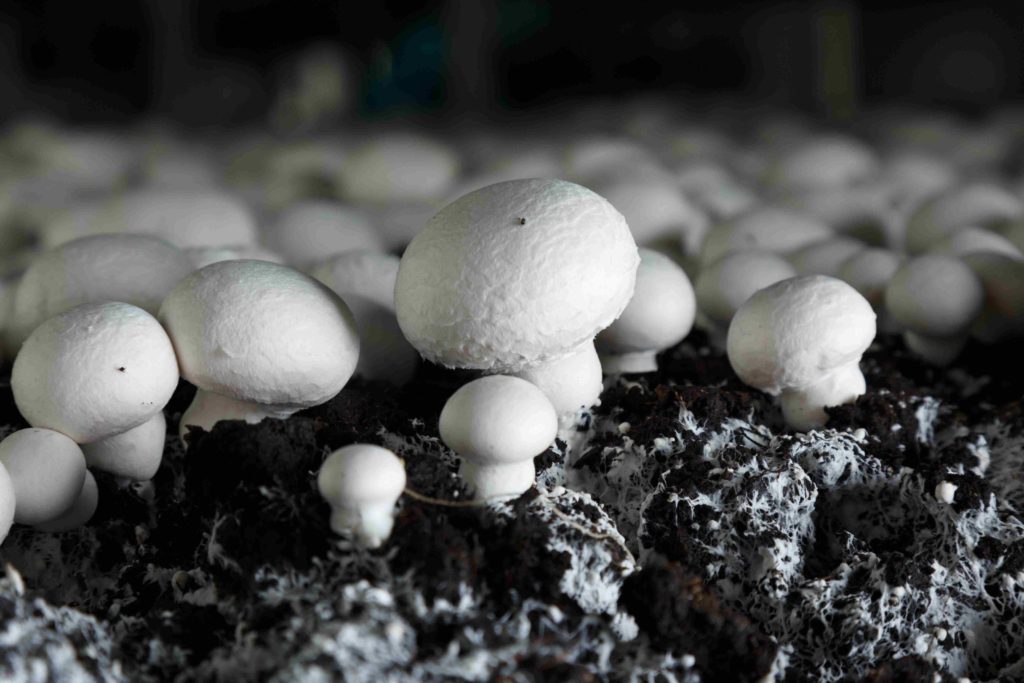28 September 2020
Better understanding of button mushroom DNA published, to improve breeding
 A research team of Wageningen University & Research (WUR) has made an important step in opening up possibilities to breed for innovative types of button mushrooms. For that, they used a DNA-analysis technology developed by KeyGene: Sequence Based Genotyping.
A research team of Wageningen University & Research (WUR) has made an important step in opening up possibilities to breed for innovative types of button mushrooms. For that, they used a DNA-analysis technology developed by KeyGene: Sequence Based Genotyping.
Button mushrooms have a very special mode of reproduction. In commercial mushrooms, the process of cell divisions that take place while forming the spores is different from the process that takes place in ‘regular’ spore formation. Caused by the aberrant spore formation, the fungal mycelia growing from the spores, all have nearly the same genetic makeup as their ‘parent’. The new genome insights may help to increase genetic variation during reproduction, which will hopefully boost breeding of button mushroom.
The research team has published high quality and extremely well-annotated genome sequences of the commercial variety and a variety with ‘normal’ spore formation in the scientific journal Scientific Reports.
Arend van Peer, Team Leader Mushroom Research at WUR: “We hope that our findings will help breeders of button mushroom around the globe to make better progress in the development of these mushrooms that fulfil the wishes of growers, consumers, chefs and others.”
The button mushrooms we eat is in fact a special type, or subspecies, of the mushroom-producing fungus Agaricus bisporus. In other subspecies of the fungus, such as the burnettii-type, ‘regular’ formation of spores occurs. In those species, descendants growing from spores all differ from the ‘parent’. This variation is the basis of breeding and progress. In the commercial type, where the ‘aberrant’ spore formation takes place, resulting in descendants which are genetically largely the same as their parent.
The WUR researchers made a cross between the ‘regular’ and ‘aberrant’ type. They studied the genetic make-up of both parents and the progeny, using a DNA analysis technology that allows for the analysis of many genetic differences in many descendants and the parents in one ‘run’. This technology, known as Sequence Based Genotyping, is one of the DNA analysis tools developed by research company KeyGene.
Dick Roelofs, program scientist DNA Innovations at KeyGene: “We are proud that our technologies are being used in academic settings, especially where new insights help to stimulate concrete innovations, such as in the mushroom team of WUR”.
The genetic comparison of the two subspecies showed that a large part of the differences between the two occur especially at both ends of the chromosomes of the fungus. The team also identified so-called ‘centromere regions’ on the chromosomes. These play a crucial role in nuclear division during growth and genetic recombination during reproduction of the fungus.
In the progeny that resulted from the successful cross between the two subspecies, the researchers identified and studied more than 8,000 locations of potential genetic differences (SNPs) in over 150 descendants. Given the relatively small genome size of the mushroom, ‘only’ 30.000.000 base pairs, this analysis is a powerful tool to study genetic differences.
The team further showed that in the burnettii-type, the genetic ‘mix-up’ of DNA that occurs during the formation of spores, by so-called crossing overs between two sister-chromosomes, happens all over the fungus’ chromosomes, so not just at a few ‘hot spots’. This can be promising for future button mushroom breeding.
Link to the open access paper: https://www.nature.com/articles/s41598-020-71043-5